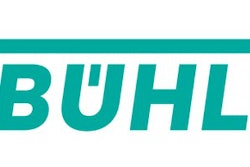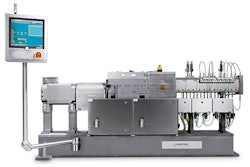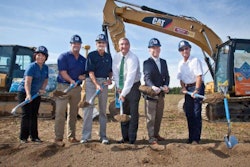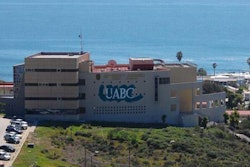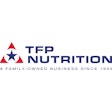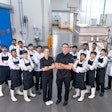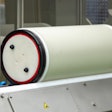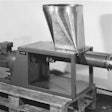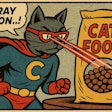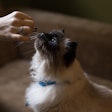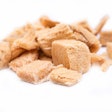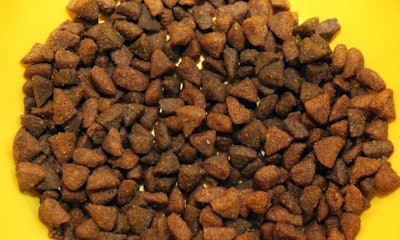
A manufacturer’s first priority is producing nourishing pet food – with a food-safe assurance – that promotes a healthy life. Plant operations must balance this priority with a gentle processing line against a profitable business model. But it’s only when each step of the processing line is considered a profit center that a manufacturer can realize the most effective operations that lead to premium quality dry pet food. One step often overlooked is the dryer.
Pet food manufacturers track maintenance costs and sometimes energy costs, but rarely do they track the costs associated with over drying. Frequently, the dryer isn’t even considered until yields are visibly reduced. The good news is a pet food manufacturer can easily find opportunities to make improvements just by looking closely at the drying step. The return can be especially high.
How moisture impacts profit
Newly formed kibble is soft and spongy, too much or too little moisture can cause a range of issues that affect product integrity as well as food safety. Detailed tracking and precise measurements of water and steam injection within the pre-conditioning and extrusion process are critical. Product that is lower in moisture from this step will reduce the evaporative load on the dryer, be easier to transport and less likely to deform while being handled or stacked. However, lower product moisture in the extruder increases the mechanical energy required to mix, shape and cut the kibble, and the product may not reach the desired level of cook. Reaching and maintaining an optimal balance of product moisture are key to ensuring maximum profits.
Typically, extruded pet food is dried until its moisture content is low enough to reach a water activity level that is shelf stable. Typically the moisture content is less than 10 percent, but this target varies between manufacturers and recipe formulations and is based upon achieving a water activity level that will not support pathogen growth.
A well-designed pet food dryer should be able to dry product within ±1 percent moisture on a 9 sample cross section. Product uniformity is affected by many things that start with dryer design and process optimization. This includes, but is not limited to, the internal dryer construction, understanding product characteristics and properties, airflow volumes and velocities, bed loading, bed depth, product agitation, humidity and upstream processes.
Here’s a scenario to show the importance of moisture control. In this example the discharge moisture limit is 10 percent.
If kibbles coming off the dryer have a moisture variation of ±3 percent, then they must be dried to 7 percent moisture level to ensure all of the final product is not over the required 10 percent. But, this means there’s a 2.15 percent loss in production when comparing to a well-performing dryer and even more on an excellent dryer. If a pet food manufacturer is producing 75,000 metric tons per year, a 2.15 percent loss in production from this line represents 1,613 metric tons per year of lost production. At US$600 per metric ton, this can add up to US$967,800.
As shown in the example above, product loss from poor drying uniformity can be and often is extreme. Optimizing the uniformity can improve yield due to lower safety factors being applied to the final product moisture target. Specifically in the example above, a good dryer can target 9 percent moisture instead of 7 percent moisture. Understanding the equipment and the products can help achieve this across the product portfolio.
- Direct-expanded kibbles come in all shapes, sizes and formulations. All of these variations affect the dryer’s capabilities from a function of moisture removal, capacity and control settings. For instance, although a small star shape would dry faster than a large sphere due to a higher surface-to-volume ratio, when in mass, the large spheres are easier to dry due to packing characteristics allowing more exposed surfaces available for drying. Also, shape symmetry allows for uniform moisture migration to the pellet surface where evaporation occurs.
- Filled pillows have a filling mass that gets added inside of the outer shell at the end of the extrusion process. The filled strands are pinched and separated by a downstream crimping roll. The product is more fragile initially, which forces manufacturers to operate these products differently than direct-expanded kibbles, which typically maintain their shape very well throughout processing. A dryer designed for filled pillows vs. direct-expanded will be different in size for the same production rate and operate with different settings.
- Semi-moist pet food varies greatly from moisture removal of less than 5 percent to 35 percent or more water removal for some specialty products; the dryer requirements also vary. The drying curve (the rate at which the product loses moisture at a given temperature and airflow) differs significantly between high incoming moisture, semi-moist and more standard direct-expanded kibble. This variation is due to the differences in semi-moist product formulation. Final moisture content is correlated to a safe water activity level of approximately 0.6 for shelf stability. Humectants and other ingredients are part of the formulation that chemically binds the water, allowing higher moisture contents for a soft texture. In some cases, there is little to no moisture removal required, only cooling to allow packing without condensation. In the case of a lower moisture removal, it is sometimes possible to use the dryer as a transport system from extrusion to packaging as the water will naturally flash off in transport. However, high moisture removal products typically have lower production capacity requirements and a dedicated production line. Because the product is normally more fragile and malleable than a typical extruded kibble, the bed loading tends to be lower.
How to package new profits
As discussed above, there are many compelling reasons to recapture profits. With a tight moisture tolerance, the economical savings can be great. The processor can maximize the value of the cheapest product ingredient - water, without fear of producing an unstable and non-saleable product. The key is having the right drying equipment and operating it properly.
There are a number of controls technologies that monitor and improve a dryer’s effectiveness:
- Automated humidity control (energy efficiency and food safety)
- Automated evaporation control (drying consistency and energy efficiency)
- Automated moisture control (drying consistency)
- Automated product tracking and bed depth monitoring (energy efficiency)
As products evolve and new SKUs are introduced, it is likely that the dryer is not operating as initially designed. It may be worth conducting an annual dryer evaluation. Engineers with scientific understanding of how each dryer functions can provide the expertise to analyze the process and mechanical efficiency of the equipment and make recommendations to increase capacity, minimize energy usage or improve product uniformity.
An improvement scenario
If a processor generates 10 metric tons of a product in an hour at a 10 percent discharge moisture content, this equates to 240 metric tons per day. Operating 325 days a year, the result would be 78,000 metric tons a year. But if the processor raises the moisture set point by as little as a quarter of a percent to 10.25 percent, there could be an improvement of 217 metric tons a year. Therefore, a small adjustment like this can mean a significant increase in production as well as a better use of dryer energy.
Wrapping it all up
In identifying profitable opportunities within their process, a pet food manufacturer should look at factors that affect the output capacity of the dryer; the uniformity of the finished product; the durable, trouble-free operation of the dryer; and overall operating economics of the system.
The true cost of a dryer relates to its energy efficient operation, the level of moisture consistency in the final product and “up-time” for production over the life of the dryer. The true value of a dryer is determined by many years of durable, dependable service producing a high-quality pet food. Ultimately the best dryer will be a system that will meet today's objectives, yet be flexible enough to meet the challenges of manufacturing and product specification changes in the future.
Example of overdrying:
Hourly feed rate at 25 percent moisture – 5,867 kg
Hourly output at 12 percent moisture (A) – 5,000 kg
Hourly output at 11 percent moisture (B) – 4,944 kg
Difference in hourly production (A – B = C) 56 kg
Annual hours of dryer operation (D) 7,800
Annual lost production from overdrying (C X D = E) 436,800 kg
Annual cost of lost production (E/1000 x US$600 = F) US$262,080/metric ton
Energy expended per kg of water removal (G) 3,300 kj
Annual excess energy used in overdrying (E X G = H) 1,441 MM kj
Energy cost per kJ (I) US$0.0000035
Cost of excess energy consumption (H x I = J) US$5,045
TOTAL annual cost of overdrying (F + J) US$267,125
*Assumes value of US$600 per metric ton
Contributed by Buhler Aeroglide

